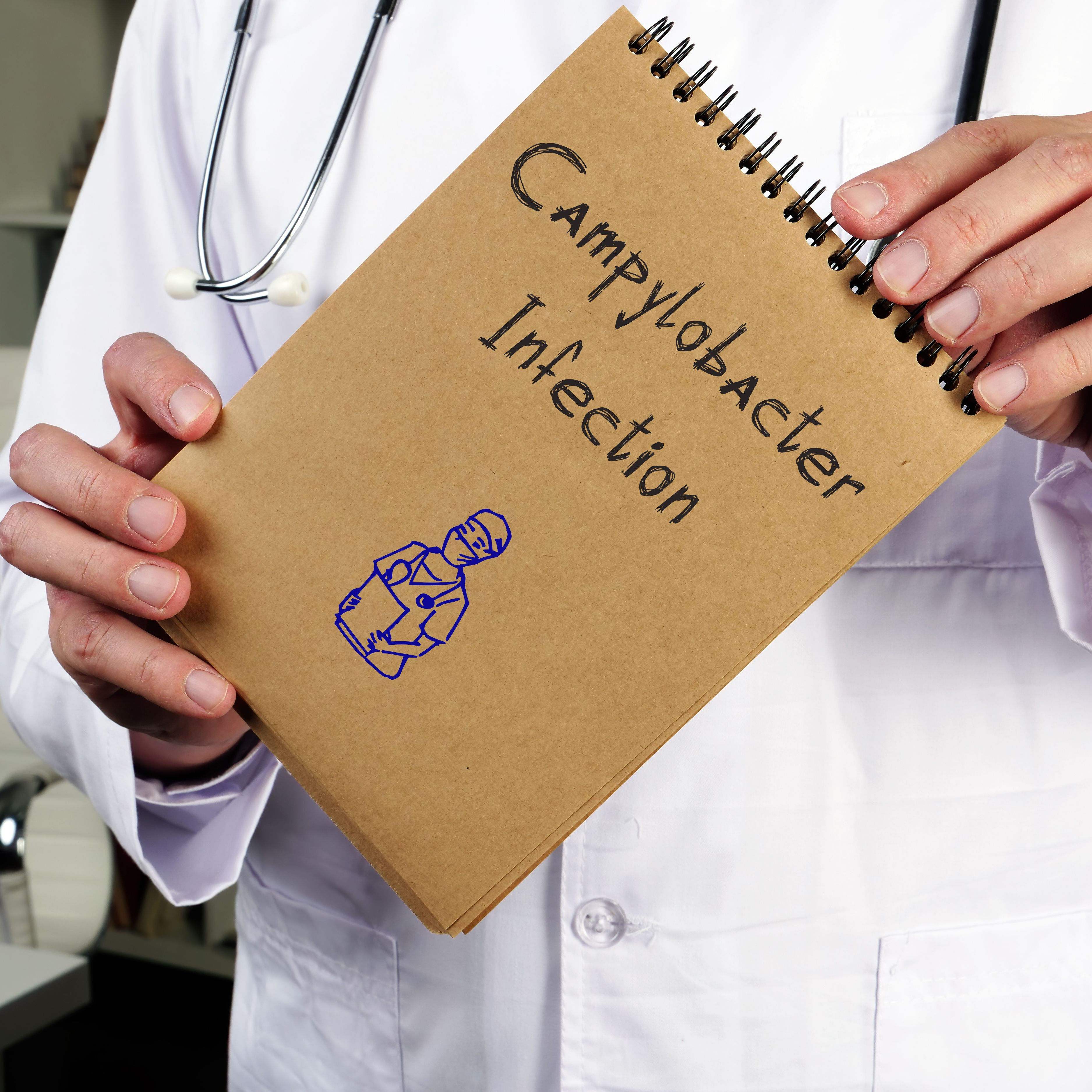
What is Campylobacter?
Campylobacter is the name given to bacteria that cause contagious diarrhoeal diseases. The Campylobacter bacteria occur all over the world and are mainly found in the European countries during the warm season. In Germany, campylobacters are the most frequent cause of diarrhoeal diseases. Young children in particular, but also young adults between 20 and 29 years of age, who especially have a weakened immune system, have a high risk of becoming infected with campylobacter bacteria. Campylobacter pathogens are found in the digestive tract of animals, although they usually do not show any signs of illness.
How is the Campylobacter pathogen transmitted?
Campylobacter is mainly transmitted through the consumption of food that is contaminated with bacteria . Unlike salmonellae, however, Campylobacter bacteria cannot multiply in the food, but persist in the environment for some time. Particularly critical for the transmission of Campylobacter is the consumption of poultry meat, raw milk or raw milk products, contaminated drinking water, undercooked minced meat or fresh raw sausage varieties such as Mettwurst. In addition, poor kitchen hygiene, for example via knives or cutting boards, but also the preparation of raw meat is considered a critical transmission route. It is also possible to transmit from person to person through a so-called smear infection from the smallest traces of stool remains of the infected person. Similar is the case with the transmission of animal faeces, whereby animal owners can in principle infect their pets. In rather rare cases, it is also possible to become infected in a body of water contaminated with campylobacter if water is swallowed while swimming.
What are the symptoms of a Campylobacter infection?
A Campylobacter infection manifests itself in an initial phase through the following rather untypical symptoms:
- Fever,
- Headache and muscle pain,
- severe abdominal pain or cramps,
- Nausea,
- very watery to pulpy diarrhoea, which in some cases can even be bloody.
How is a Campylobacter infection diagnosed?
A Campylobacter infection is usually diagnosed by a stool sample . A culture of the stool sample is taken to the laboratory to identify the bacteria. However, in the case of diarrhoea, it is not always necessary to identify the type of bacterium in order to treat the illness. A stool examination is therefore usually only carried out in particularly severe cases of illness. By using a so-called polymerase chain reaction (PCR method), it is possible to analyse the genetic material of the bacteria present in the stool. .
What is the course of a Campylobacter infection?
As a rule, the time between infection and the outbreak of the disease is between 2 and 5 days, sometimes it can be between one and 10 days. An illness with Campylobacter bacteria usually lasts up to a week and usually runs without complications. In many cases, no treatment is necessary because the symptoms go away on their own. In most cases, symptoms do not even appear. In rather few cases, however, complications such as rheumatic joint or meningitis can occur. In a very small number of cases, neurological diseases such as Guillain-Barré syndrome, which leads to paralysis, can also develop.
A patient is considered contagious as long as he or she excretes the pathogen through the stool . Even after all symptoms have subsided, the person affected can still be infectious. As a rule, the period of infection is between 2 and 4 weeks, although people with a weakened immune system can remain contagious far beyond this time.
How should a Campylobacter infection be treated?
Sick people should take it easy, especially physically during the acute phase, and stay at home if possible. Good hand hygiene, especially after each visit to the toilet, is particularly important. In addition, care should be taken to ensure sufficient fluid balance in the event of particularly severe diarrhoea and/or vomiting. Affected people should eat easily digestible food. The addition of so-called electrolyte replacement solutions from the pharmacy can also be useful as a salt supplement.
If young children or senior citizens are ill with a campylobacter infection and suffer from diarrhoea that lasts more than two days, medical advice should be sought . In some cases, the disease may be treated with an antibiotic, such as azithromycin. Alternatively, ciprofloxacin may be given. However, resistance to the latter substance is increasingly being noted, which is why the drug is only used cautiously.
What should be observed with regard to the Infection Protection Act?
Persons, who are infected with Campylobacter, should not prepare food for others. If the affected person comes into professional contact with food, a temporary occupational ban applies until after complete recovery . If children under 6 years of age are diagnosed with infection, they are temporarily excluded from community facilities such as kindergartens or schools. Parents should inform the respective community institution about their child's illness.
How can you protect yourself from a Campylobacter infection?
Since Campylobacter bacteria are transmitted through food, among other things, it is important to ensure good kitchen hygiene. Meat, especially poultry, should be cooked thoroughly, as the bacterium can also survive in frozen products. The thawing water should be disposed of directly and all objects that have come into contact with it should be rinsed thoroughly with warm water. People with a weakened immune system, but also infants, small children and senior citizens should refrain from eating undercooked meat or raw milk products. Furthermore, it is always important to ensure good hand hygiene . This applies especially when using the . This applies above all when preparing food, when eating, but also after each visit to the toilet.
